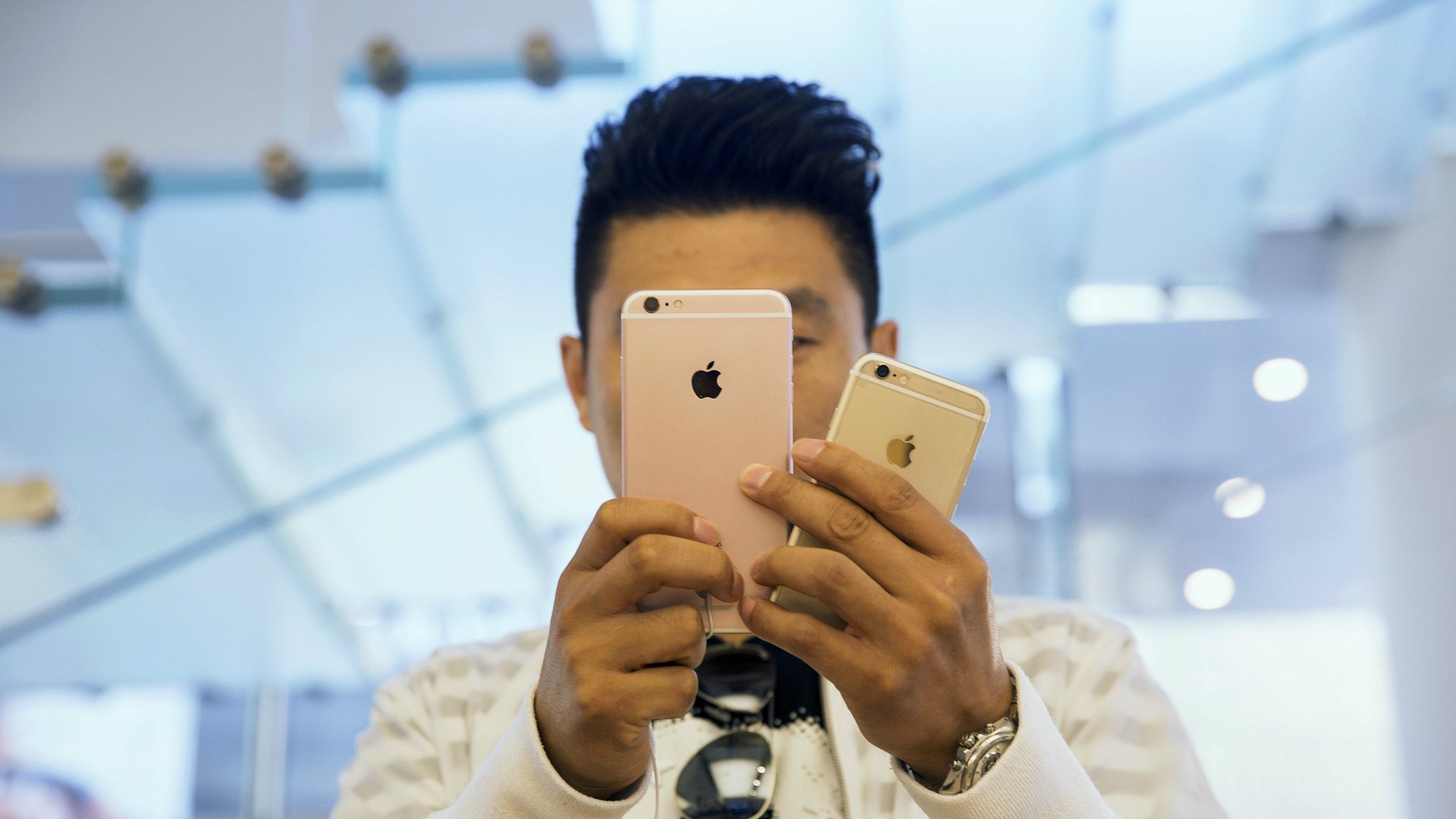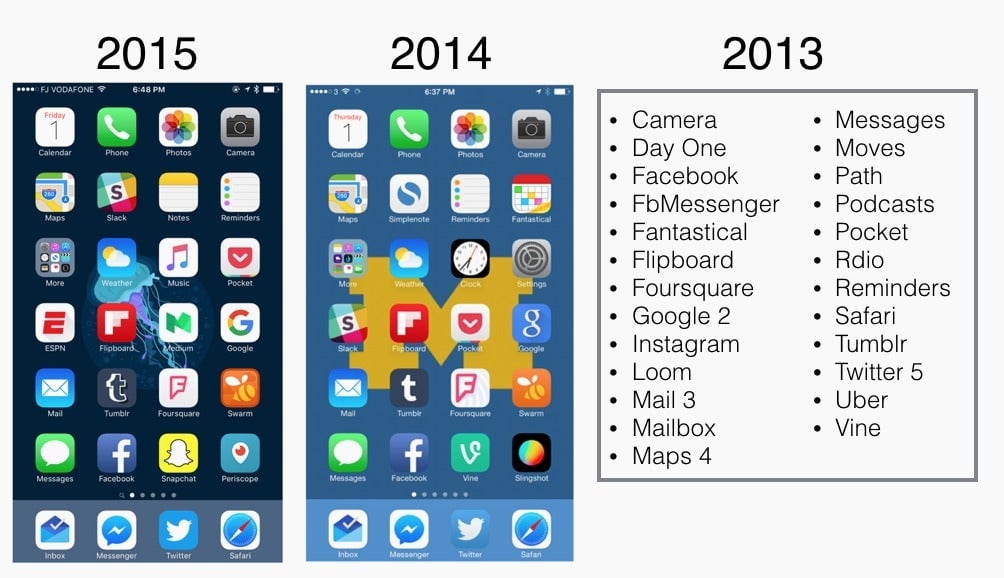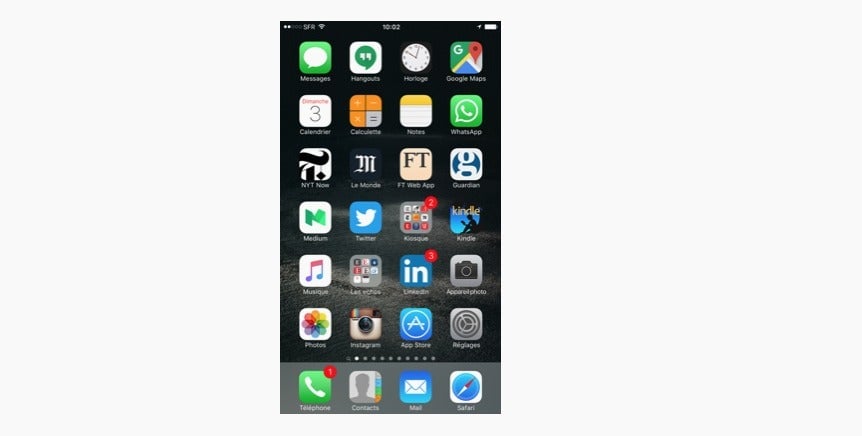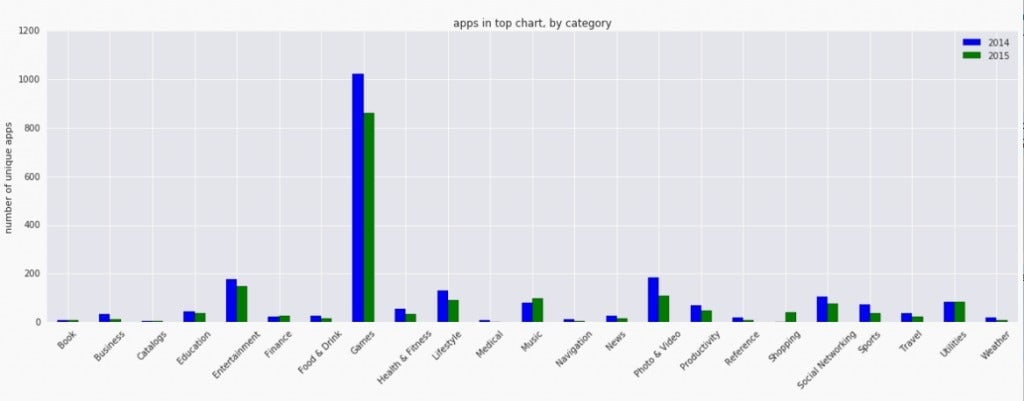Why do some apps live on our home screens forever?
What is it that makes a mobile app stick to one’s home screen for a year or more? And why does the bond sometimes fade? Today, we explore success requirements for a news app. And, this is new, we will ask for your opinion.


What is it that makes a mobile app stick to one’s home screen for a year or more? And why does the bond sometimes fade? Today, we explore success requirements for a news app. And, this is new, we will ask for your opinion.
More than ever, the mobile apps business is a winner takes all playing field. We download a flurry of apps, kill the vast majority a few days later, and end up using just a few on a regular basis. It is difficult to assess the extent to which the Pareto principle (also known as the 80-20 rule) rules our app usage, but it might be reasonable to say that out of 50 to 100 installed apps, we only use half a dozen of utilities: flavors of messaging, email and collaborative tools, transportation-related apps (maps, navigation, or car hailing), and fun stuff such as Instagram or a photo app. In most cases, the basics remains roughly the same from one year to another.
A few days ago on Medium, tech writer and investor M.G. Siegler shared his 2015 Homescreen for the 3rd consecutive year. It looks like this:

His explanations are worth reading.

Only four news apps: NYT.com, Le Monde, FT.com, The Guardian and Les Echos. (The two other media I’m looking on a daily basis from Safari are Quartz and Techmeme.) Note that on the next screen are two lines of apps I use quite a bit: Skype, Deezer (music), Uber, Waze, Yahoo! Weather, and Nuzzel. The rest is for occasional uses or experiments.
When we drill down to the news apps segment, most of us are use four or five, rarely more. And many of these are aggregators such as Flipboard, the ultimate copyright killing machine—with its providers consent.
At this point allow me to ask about your own experience, dear reader. We set up a quick questionnaire to understand your choice criteria. Thanks for taking two minutes to answer it.
Landing on the smartphone homescreen is a challenging obstacle course. The news brand notoriety helps, even if the notion has been battered by aggregators that build stickiness by analyzing usage patterns—as Flipboard or NewsRepublic do.
Content quality is often tied to the trust associated with a news brand, but relevancy also depends on an app’s self-learning capabilities.
An interesting way to deal with the current deluge of contents implies connecting the app to the user’s social sphere: my news are filtered by my Twitter or Facebook communities. The fact that we share the same range of interests leads to an optimized selection. This is the basis for the social app Nuzzel, which extends the user’s filtering by proposing recommendations from friends of friends. (Nuzzel also broadens its reach thanks to a clever newsletter and email system—more on this in a future Monday Note.)
Without a great interface, clear and well-adjusted functionalities lead nowhere. On that matter, the bar never stops rising. New CPU and GPU power opens the way to more computational and graphic rendering capabilities, and hardware makers also add layers of complexity with features that are now expected by users—What? Your app doesn’t take advantage of 3D Touch?— even if such bells and whistles do not always make sense for a news applications.
Even if all the boxes are checked, shooting for the top ranks in Apple’s App Store is not assured. Ranking high in is becoming more difficult year after year.
Last week in Medium, Gilad Lotan, chef data scientist at Betaworks published a worth-reading analysis that shows how hard it is to rank high in the AppStore (emphasis mine):

In 2015, a total of 1933 different applications made it into the iTunes Top Chart for Free Apps. This number is 24% less than 2014, where there were significantly more unique apps that hit the top charts, even if just for a day. (…)
If we group the data by App category, we see that across the board, there were consistently more apps that made it to the charts in 2014.
Every year, new apps have to compete with a growing number of older apps. If we group the data by the application’s launch year, we see that roughly 50% of apps that appear in the top chart in a given year were also launched that year. This falls exponentially as we move back in time. (…)The fact that all of these old apps are still downloaded and used, makes it harder for new applications to get into the top charts, making it even harder to gain visibility and attract users.
To put it in a different way, when it comes to reaching the top in mobile app stores, the situation shows little improvement to what NewsRepublic founder Gilles Raymond described a year ago, calling it The Deadly Mobile Application Funnel.
App stores have had tremendous impact, they gave thousands of developers access to billions of smartphone users. But the system is aging badly, it buckles under the weight of roughly 3 million apps available in iOS and Android ecosystems together. For the consumer, these stores now look like thick jungles with Android being a bit more hazardous (more prone to viruses). For its part, Apple would like to see its App Store more like a neat French garden, but it is now filled with weeds. As a user, I completely subscribe to the view expressed by Jean-Louis Gassée several times here recently, and in 2012 here and here, calling for a serious curation of the AppStore as the current rankings and classifications are no longer reliable nor relevant.
As a former publisher of apps, I think the single unified app submission system has shown its limitations. It’s not normal for an app that cost $200,000 to develop to have to wait two weeks for validation, queued behind an app featuring a light saber that took 6 hours to create. Publishers should be given the opportunity to pay for preferred treatment in the App Store. Apple seems to give growing consideration to the “pro” market, as exemplified by the launch of the iPad Pro, or by the care granted to Enterprise customers and its relationship with IBM. Why does the App Store lag behind?